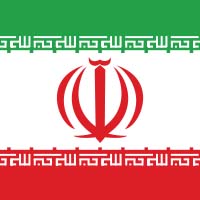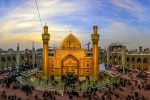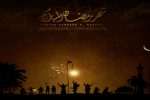The Life and Times of Imam Hasan bin Ali (A.S.)
Imam Hasan was the eldest son of Fatima Zahra, the daughter of the Prophet of Islam, and Ali bin Abi Talib.Imam Hasan is the second Imam of the followers of Ahl al-Bayt, also known as the Shi’a Imamiyya. He was born on the 15th of Ramadhan in the 3rd year of Hijra. One of his […]

Imam Hasan was the eldest son of Fatima Zahra, the daughter of the Prophet of Islam, and Ali bin Abi Talib.
Imam Hasan is the second Imam of the followers of Ahl al-Bayt, also known as the Shi’a Imamiyya. He was born on the 15th of Ramadhan in the 3rd year of Hijra. One of his wives, named J’udah binte Ash’ath, poisoned him on Mu’awiyyah’s instigation and bribery. He was martyred as a result of that on the 28th day of Safar in the 49th/50th year of Hijra. Some reports give the date of his martyrdom as the 7th of Safar. But that, actually, is the birth anniversary of the seventh Imam, Moosa al-Kazim, and the first date is more authentic.
He was named Hasan (the most beautiful – in looks as well as in character) by the Prophet of Islam on Allah’s command. This name was never used for anyone before Islam.
Hasan was very dear to his grandfather, the Prophet of Islam. There are numerous hadeeth reports in praise of the two grandsons the Prophet had, Hasan and his younger brother Husayn. The most famous of them all is as follows:
“Perhaps Allah will create harmony between two groups of Muslims who had been fighting, through this grandson of mine.”
There are numerous stories about the two grandsons of the Prophet of Islam in the authentic books of hadeeth and history. Every collector of hadeeth has dedicated at least one whole chapter in their respective collections on this topic. We quote a few of them.
1. The Prophet said – al-Hasan and al-Husayn are the princes of the youth of Paradise, and their father is more glorious than the two of them.
2. These two grandsons of mine will be the Imams, whether they are standing (meaning: taking action against or for some ideology) or sitting down (meaning: accepting a situation without any action).
3.Bukhari reports from Abu Hurayra that the Prophet was holding Hasan and pressing him against his chest.
4. Bukhari reports that the Prophet was sitting on the pulpit and Imam Hasan was sitting next to him, he would look at the gathering and then he would look at his grandson and say: This grandson of mine is a leader, perhaps Allah will create accord between two groups because of him.
5.Bukhari reports from Usama bin Zayd: The Prophet was holding Hasan and Husayn and was saying: Allah Almighty! I love these two – You too love these two.
6.Bukhari reports from Barra bin Aazib: I saw Abu Bakr while he was holding up Hasan and was saying – I swear by the life of my father, you are closer in looks to the Prophet of Islam than your father (Imam Ali). (While Abu Bakr was saying this) Imam Ali was there and he just laughed.
7.Bukhari reports from Ibn Umar – The Prophet’s pleasure (for the Muslims) is in the love of his Ahlul-Bayt.
8. Bukhari reports from Anas bin Malik: No one was closer to the Prophet in looks than Hasan bin Ali.
Hasan had grown up with his grandfather, the Prophet of Islam. He was only eight years old when the Prophet of Islam passed away. Hasan came of age during the Khilafat of Umar bin Khattab. Once during a game Hasan got into an argument with a son of Umar, the Khalifa. When the argument was prolonged, Hasan said to the Khalifa’s son: You are only the son of our freed slave – you have no face to argue with us.
The Khalifa’s son was very angry. He came to his father and complained to him. Umar replied to his son – Can you go back to Hasan bin Ali and ask him to give that statement in writing? The son was very surprised and said: What would you do with that writing?
Umar said: I would say in my last will that that writing should be placed inside my shroud – that would be the guarantee for my salvation. At the Battle of Camel while there was intense fighting – Imam Ali saw that misguided Muslims were coming before the camel on which Ayesha(RA) was riding and getting killed protecting it. He commanded that the camel should be felled. Imam Hasan went forward and with one stroke of his lance pierced both eyes of the camel. The camel fell and that ended the Battle of the Camel.
At the Battle of Siffeen when Imam Ali’s forces were confronting Mu’awiyyah’s forces, the latter took control of the banks of the river and denied water to the other party. Imam Ali commanded his sons, Hasan and Husayn, to go and fight. Hasan fought bravely and defeated the Syrian forces. However, on Imam Ali’s orders, everyone including the enemies were allowed to draw water.
Hasan was unanimously elected as Khaleefa of Muslims in the 40th year of Hijra after the assassination of Imam Ali. First the people of Koofa and Basra accepted him and then those of Madinah and Makkah approved. However, the governor of Syria, Mua’wiyyah, who had rebelled against Imam Ali previous to this, refused to accept Imam Hasan as the Khaleefa. It was unfortunate that Hasan was the first Khaleefa of Muslims to be ELECTED in peacetime, and Muslims could not uphold that due to their own selfishness and vested interests. Whether such people can be called Muslims is yet another question.
Hasan finally agreed to sign a treaty with Mua’wiyyah to avoid bloodshed. The conditions of the treaty, very briefly, were:
1. Mua’wiyyah will rule according to Qur’an and Sunnah.
2. He will stop harassing and torturing the people of Koofa (and those elsewhere) who were the followers of Ali.
3. He will stop the cursing of Imam Ali from the Pulpits.
4. He will not have the right to appoint a successor after him; the matter will be left to the Muslim community.
The rest will be related from Sh. Mufeed’s “Kitab al-Irshad, as follows:
Mua’wiyyah accepted all of this and made a treaty with Imam Hasan to observe it. He swore to him that he would fulfill it. When the truce had been concluded, Mu’awiyya went on until he reached al- Nukhayla. That was on Friday; he prayed the midmorning prayer (duha al-nahar) with the people and he addressed them. In his address, he said: “By God, I have not fought against you to make you pray, nor to fast, nor to make the pilgrimage, nor to pay zakat. Indeed you do that (already).
I fought so that I might have power over you and God has given that to me when you were reluctant to (obey) Him. Indeed I have been requested by al-Hasan, peace be upon him, (to give him) things and I have given things to him. All of them are now under my foot. And from now on I will not fulfill anything.”
Then he went on until he entered Koofa. He resided there for several days. When the pledge of allegiance by its inhabitants had to be carried out, he went up on the pulpit and addressed the people. He mentioned the Commander of the Faithful, peace be upon him, and that he had taken from him and from al-Hasan, peace be upon him, what he had taken.
Al-Hasan and al-Husayn, peace be on them, were present. Al-Husayn, peace be on him, rose to reply but al-Hasan, peace be on him, took him by the hand and made him sit down. Then he, himself, (al-Hasan) arose and spoke: “O you, who mention Ali, I am al-Hasan and Ali was my father. You are Muawiya and your father was Sakhr (Abu Sufyan). My mother was Fatima and your mother was Hind. My grandfather was the Apostle of God and your grandfather was Harb. My grandmother was Khadija and your grandmother was Futayla. May God curse him who tries to reduce our reputation and to diminish our nobility, who does evil against our antiquity and yet who has been ahead of us in unbelief and hypocrisy.”
Groups of people in the mosque shouted out: “Amen, Amen”
When the peace between al-Hasan, peace be on him, and Muawiya was concluded in the way we have mentioned, al-Hasan, peace be on him, left for Medina. He resided there, restraining his anger, staying close to his house, and awaiting the command of his Lord, the Mighty and High, until Mu’awiya had completed ten years of his administration. (Then) the latter decided to have the pledge of allegiance given to his son, Yazid, (as his successor).
He communicated secretly with J’uda, daughter of al-Ashath b. Qays—she was the wife of al-Hasan, peace be on him—to urge her to poison him. He gave an undertaking to her that he would marry her to his son, Yazid, and he sent her a thousand dirhams. J’uda gave him the poison to drink but he lingered on sick for forty days. He passed along his (final) road in the month of Safar in the year 50 A.H. (670).
At that time, he was forty-eight years of age. His succession (to the Imamate) had been for ten years. His brother and testamentary trustee (wasi), al-Husayn, peace be on him, undertook the washing and shrouding of his body, and buried him with his grandmother, Fatima, daughter of Asad b. Abd Manf, may God be pleased with her, in (the cemetery of) al-Baqi.
Various historians have recorded that when the news of Imam Hasan’s passing away arrived in Damascus, Mua’wiyyah said Allah-u-Akbar very loudly and did a sajdah of thanks.
Imam Hasan had left a last will with his brother Husayn that he should be buried next to his grandmother, Fatima binte Asad. When the funeral procession was on its way to the Baq’ee cemetery where Fatima binte Asad is buried, Imam Husayn had it stopped at the Prophet’s burial place. A’isha, a surviving wife of the Prophet, had been following the procession. She thought for a minute that they were going to bury Hasan next to the Prophet. She immediately intervened saying that she would not allow it. Suddenly the scene turned ugly.
There were words exchanged between A’isha and Muhammad Hanafiyya, another son of Imam Ali. A’isha turned to the Umayyad troops commanded by Marwan, who also had been following the funeral procession. On her instigation, Marwan beckoned to his archers and they began shooting arrows at the procession. Numerous arrows were lodged in the coffin and actually seven of them had pierced the remains of Imam Hasan. The situation was brought back under control when Husayn explained that he was stopping there for blessings only and that he would bury his brother in Baq’ee next to their grandmother.
It is to commemorate that event that when Imam Hasan’s Taboot is taken out by his devotees, even today, one sees a number of arrows lodged in it.
THE FAMILY OF IMAM HASAN BIN ALI
Given below are the details of the wives and children of Imam Hasan bin Ali.
1 His eldest was Zayd, whose mother was Umm Basheer d/o Abi Mas’ood Uqba Khazraji. There are also two daughters from the same mother named Umm al-Hasan and Umm al-Husayn. Both these daughters of Imam Hasan were at Karbala and when the soldiers attacked the tents, they along with Aatika d/o Muslim bin Aqeel (7 years old) got trampled under the hoofs and died. Zayd bin Hasan lived to be nearly one hundred years old. He was a very pious man. He was responsible for the SADAQAAT of the Prophet of Islam during his lifetime.
Sulayman bin Abdul Malik took away that authority from Zayd but Umar bin Abdul Azeez restored it to him. Zayd married Lubaba d/o Abdullah bin Abbas, who was first married to Abbas bin Ali who had been martyred at Karbala. Zayd bin Hasan had a son named Hasan Ameer and a daughter named Nafeesa.
2. Hasan bin Hasan, also known as Hasan Muthanna (Hasan the second), was born of another wife named Khawla d/o Manzoor Fazaree. Hasan Muthanna went to Karbala with Imam Husayn, fought and was wounded. After Yazeed’s armies had left from Karbala, the local people came and looked for survivors. They found Hasan Muthanna badly wounded but still breathing. They took him to their home and treated him. One report says that he was actually taken prisoner but Asma bin Kharija took him away from the prisoners by asking Umar Sa’ad, the commander of Yazeed at Karbala. He was cured and returned to Madinah.
He married one of the daughters of Imam Husayn named Fatima, had several children, and was poisoned to death, only 35 years old, by Abdul Malik bin Marwan. Hasan Muthanna was a man of great piety and character. He was responsible for the SADAQAAT of Ali bin Abi Talib, but Hajjaj bin Yusuf deprived him of that right.
His children from Fatima d/o Husayn were: Abdullah Mahadh, Ibraheem al-Ghamar, Hasan Muthallath (Hasan the 3rd), Zaynab and Umm Kulthoom. Abdullah Mahadh lived in the last days of Banu Umayya and the beginning days of Banu Abbas. He had two sons, Ibraheem and Muhammad known as An- Nafs az-Zakiyya (the pure soul), due to his piety. At one point people of Madinah, Koofah and Basra accepted Muhammad Nafs az-Zakiyya as the new Khaleefa. Even Imam Abu Hanifa and Imam Malik as well as Mansoor did the B’ayat to him.
But later, politics took new turns. Saffah, Mansoor’s brother, became the first Abbasid Khaleefa. He died three years later. When Mansoor took control, he had remembered how he himself at one point had accepted Nafs az-Zakiyya as the Khaleefa. He imprisoned his father Abdullah and many other members of his family and sent spies in search of Nafs az-Zakiyya and his brother Ibraheem. Both of them were martyred in armed struggles. A great number of the male children of this family were brutally killed by Mansoor and later Abbasi Khaleefas (the period between 136 and 158 Hijra).
Let us quote from Amir Ali in his book titled: A SHORT HISTORY OF SARACENS:
“Abu Jafar’s character was a strange mix of good and evil. As a politician, a statesman,, and a sovereign, he is almost unsurpassed. Nor can he be said to be inferior to any in far sighted wisdom or attention to the public weal. As a parent he was devoted to his children. As a man, however, he was both treacherous and unsparing of human life. Saffah’s cruelty was due to vindictive frenzy; his successor’s bloodshed sprang from calculation. Cold-blooded, calculating, and unscrupulous, he spared none whom he thought in the least dangerous to himself or to his dynasty. His treatment of the descendants of the Caliph Ali forms the darkest page in Abbasid history.” (page 213).
But Allah gave the children of Imam Hasan so much grace that their number kept increasing. Abdullah Mahadh had four more sons. One of them named Idrees bin Abdullah is the progenitor of the Idreesids (Adaarisa) of North African countries. Idrees had married a woman from the Berbers and his son (also named Idrees) ruled in that area for a long time. He was also assassinated by poisoning.
Ibraheem al-Ghamar bin Hasan Muthanna had a son named Isma’eel ad-Deebaj. Ad-Deebaj had two sons: Hasan bin Isma’eel ad-Deebaj – he left a large progeny; and Ibraheem bin Isma’eel ad-Deebaj – he came to be known as Tabataba. It is mostly his progeny who have spread across Iran and Iraq who are known as the Tabatabai and use that as their last name.
It was the children of Imam Hasan and their children who came to India as the first Muslims in Sind. This was in the time of Hajjaj bin Yusuf. Later many of them moved from Sind to other parts of India. Hasani Syeds populate a town named Rudawlee near Lucknow, in Punjab and in other areas of the sub-continet.
3. Abu Bakr, Qasim and Abdullah were from a slave wife. All three brothers were martyred at Karbala.
4. Imam Hasan also married Umm Is-haaq d/o Talha bin Ubayd Allah of Taym. From this union were two sons: Talha, Husayn al-Athram, and a daughter Fatima.
5. Imam Hasan had also married J’udah d/o Ash’ath al-Kindi. There were no children from this union.
In fact, by one estimate, the Syeds from the branch of Imam Hasan (as opposed to the Syeds from Imam Husayn’ s branch) are really greater in number.
Many of them went into hiding and TAQAIYYA during the persecution by the Abbasids. It is very likely that they actually could not tell their children who they actually were. Many Hasani Syeds do not know that they are actually Hasani or even that they are Syeds. This was the extent of ZULM on the children of the Prophet of Islam across the centuries. One of the great-grandsons of Imam Hasan is buried in Karachi, Pakistan. He is known as Abdullah Shah Ghazi. His grave-site at the seashore resort of Clifton is a shrine for many to revere and dedicate their offerings.
6. There are another son named Abdur Rahmaan, and four other daughters: Umm Abd Allah, Fatima, Umm Salama and Ruqaiyya. These children were from different mothers.
During the period of Umayyads, it was said that Imam Hasan used to divorce his wives, frequently. Some historians have recorded this insinuating gossip without comment. We will write about it presently.
THE 200 WIVES OF IMAM HASAN BIN ALI
There is a popular report in history that Imam Hasan bin Ali looked like the Prophet himself (may Allah’s peace and our salams be unto them both). Muslims felt it their great honor to marry their daughters to the grandson of the Prophet who also looked like the Prophet. Imam Hasan was a very kind person. To please the Muslims, he would marry a woman and then divorce her, so that he could impart that honor on another family. This is the version recorded by “friends.”
Now the enemies of Imam Hasan had their own agenda. Mu’awiyyah had obtained a treaty from Imam Hasan by political maneuvering, connivance, bribery, and threat of force. He was a very clever man. He knew that if he went into an armed confrontation with Hasan bin Ali, the beloved grandson of the Prophet will become a martyr and he himself will never be able to gain that glory which comes with a legitimate office of Khilafat. He then, secretly, had Imam Hasan assassinated through one of his own wives, J’udah bint Ash’ath.
The reports about Mu’awiyyah being behind the assassination are rejected outright by the majority of Muslims with the statement that: Oh! One more fabrication by the Rafidhis.
In addition to this, it was in Mu’awiyah’s interest to spread bad news and mis-information about Imam Hasan. Once he had acquired the power needed, he set about doing that by appointing official reporters and historians who wrote the history the way he wanted. One of the major aspects of this conspiracy was the story of 100, 200, or, by one account, 300 wives of Imam Hasan and his divorces.
Some writers, mainly friends, replied to this question and tried to justify Imam’s actions of marrying and divorcing these 100/200/300 wives because Islam allows marriages and divorces and one is free to act within the law. In their opinion there was nothing wrong in that. Within the legal framework there may not be anything wrong in it. But the question is that Imam’s life should be an exemplary life for all people and at all times.
These stories of marriages and divorce were all fabricated during the period of Mu’awiyyah and given currency during the rule of the 2nd Abbaasid caliph Mansoor Abbasid in order to discredit the family of the Prophet for his political convenience. Tabari in his “Tarikh” clearly states that the Abbasid revolt against the Ummayads was started with the slogan that Rule belongs to the family of Muhammad (SA)the Prophet of God. But when the Abbasids succeeded in toppling the Ummayads and established their own Government, they conveniently forgot their promise to pass on the power to the descendants of the Prophet, i.e. the great grandson of Imam Hasan(As) Mohammed Nafse Zakiya.
Not only that, Mansoor had at one point accepted Nafs az-Zakiyya the legitimate Khaleefa himself (so did Imams Abu Haneefa and Malik). Obviously, within his heart he felt this guilt that he was usurping the Rights of Ahlulbayt of Muhammad(SA), that the true power belongs to them. The writer of Muntakhab at-Tawareekh,
Muhammad Hashim Khurasani, reports that although Nafs az-Zakiya himself did not take any initiative in this respect, Mansoor had imprisoned his father and other family members and sent spies looking for Nafs az-Zakiyya and his brother Ibraheem who were hiding. They were both martyred in Baghdad in the year 762 AD in armed struggles defending themselves. After the martyrdom of Nafse Zakiya, Mansoor came to Madina and gave a speech in which he said that Hasan Ibn Ali had power but gave it up in favour of Mu’awiyah and forfeited his right to govern. Power, therefore, belonged to the descendants of Abbas Ibn Abdul Muttalib and not to those of Muhammad, the Prophet of God (SA). The logic in this argument beats me.
To say that because Imam Hasan had signed a treaty with Mu’awiyyah therefore his descendants had lost the right to rule could hold water to some extent. But, how could that, automatically, make the descendants of Abbas bin Abdul Muttalib the rightful claimants of Khilafat cannot be understood.
From that time onwards Mansoor began the persecution of the descendants of the Prophet, particularly the children of Imam Hasan (AS). His main aim was to discredit the Imam and with that, his descendants to any Rights to power. It was at that time that the stories fabricated about the Imam to make him and his descendants invalid to rule, during Mu’awiyyah’s time were given greater currency.
Let us now look at these reports in a rational manner.
(1) The first report was given by Al-Mada’ini who died in 225 AH. Al-Mada’ini gives a figure of 70 wives. This man, Al-Mada’ini is known to have been a partisan of the Ummayads and a fabricator of Hadeeth. For example, Aban Ibn Adi in his book Mizan al-I’tidal, v2, p 232 says that Al-Mada’ini was a liar and a fabricator of Hadith and is not to be trusted.
We are however, willing to give the benefit of the doubt to Al-Mada’ini and we will assume that Al-Mada’ini recorded what he found to be current authentic reports in his time. Al-Mada’ini is also one of the few historians who have given a unified and complete report about the Treaty of Imam Hasan with Mu’awiyyah (See for example, Jafari in his Origins and Early Development of Shia Islam, Longman, London, 1979).
(2) The second report appears in the book called Noorul Absaar by Shablanji who died in the year 298 AH. He reports 90 wives. He was also regarded an untrustworthy writer and a fabricator of Hadith.
(3) The third report of 250 to 300 wives is found in the book called Qootul Quloob” by Abu Talib Makki who died in 380 AH.
Now look at the facts. All three reports have a very clear discrepancy in the number of wives. That means, there is no TAWATUR in the facts of the report. However, there is one common element in all three. All three writers maintain that these so called marriages and divorces took place after the martyrdom of Imam Ali (AS) in 41 AH.
Imam Hasan (AS) died in the year 50 AH. So the period of 9 years in which he was supposed to be free from the restraints of his strict father Imam Ali(AS) and began the supposed habit of marriages and divorce. There are reports that Imam Ali told all his companions not to marry their daughters to his son Hasan because he was a great divorcer. Most of Shi’a Iranian authors write these reports without commenting on them. But we have grave doubts about all these reports, because they go against all common sense and against the accepted and known facts about the character of Ali and his sons.
Let us quote one example from a modern writer. Hitti in his History of the Arabs, writing about Imam Hasan bin Ali says:
“It was not long before he abdicated in favour of his more able rival and retired to al-Madinah to a life of ease and pleasure, a step which he was induced to take by Mu’awiyyah’s guarantee of a magnificent subsidy and pension which he himself had fixed and which included five million dirhams from the Kufa treasury plus the revenue of a district in Persia for the duration of his lifetime.
Though he died at the age of forty-five (ca. 669), possibly poisoned because of some harem intrigue, al-Hasan is said to have made and unmade no less than a hundred marriages, which earned him the title of mitlaq (great divorcer). The Shia laid the fatal act at Mu’awiyyah’s door and thus made al-Hasan a shahid (martyr), in fact the ‘sayyid (lord) of all martyrs’. (page 190)”
Apart from the fact that the tone of this text is highly biased in favour of the enemies of Imam Hasan, it also has inaccuracies in it. See how Hitti would like to explain away the poisoning of Imam Hasan by one of his wives as ‘some harem intrigue’, equating it with the fables of ancient Rome. The title SAYYID ASH SHUHADA is associated with Imam Husayn, and not with Imam Hasan.
In addition to that, Hitti brings in a new number of 100 wives, which is different from the previous three we quoted. He tries to add credibility to his version of this story by talking about the title of MITLAQ for Imam Hasan. He has quoted the name of Ibn Asakir for his source on this in a footnote.
Let us now look at the names of the various wives of Imam Hasan. they were:
1. His first wife was Umm Basheer d/o Abi Mas’ood Uqba Khazraji. She was the mother of his eldest son, Zayd, and also two daughters named Umm al-Hasan and Umm al-Husayn.
2. Khawla Faraziya, who was the mother of Hasan-e-Muthanna, the grand-father of Mohammed Nafse Zakiya.
3. Umme Ishaq bint Talha. She was the mother of Husayn Athram, Talha and Fatima.
4. Ju’dah bint Ash’ath. No children from her.
If we go through the biographical reports carefully, we find that the first three wives mentioned above, remained with Imam Hasan until the time of his death. It is very likely that he married Ju’dah bint Ash’ath toward the last days of his life. We will discuss the possible reasons for this marriage elsewhere.
Let us see how many wives, as a maximum, can a man be married to during his possible adult life, if he already has three wives all along. Islam allows a man to marry up to four wives at any given time. As Imam Hasan (AS) already had three wives with him to the last day of his life, he could have married one more wife at a time. Bearing in mind this limitation, just suppose, he married a fourth wife and then divorced her.
As long as that divorced wife was in the period of Idda (90 days or 3 months) the husband cannot remarry, because ruj’oo (reconciliation) can take place during the period of Idda. Secondly, a divorce in Islamic law cannot be given in a month in which the husband and wife have slept together. Therefore, the earliest a wife can be divorced is in the following month. Thus four months pass before one can take another wife. i.e. 3 wives in one year and a total of 27 wives in 9 years.
There is one other reason to discuss. Some historians have gone on to report that all those 100/200/300 wives were in the funeral procession of Imam Hasan. Could there be anything more ridiculous? There was an armed confrontation between the funeral procession and the Umayyad forces commanded by Marwan at that time. The Umayyads were being instigated by the Prophet’s beloved wife A’isha (rad) who came riding a donkey. I am sure our readers can imagine the spectacle and its being impossible very well.
Now let us come back to serious details. As we said, the minimum alleged by these so-called historians was 70 wives and the maximum 300. But, we have already shown above that the maximum possible in the circumstances was 27.
Now to refute even this maximum number of 27 wives, one can say that none of the historian, not even those who fabricated these numbers, have given any names of those wives or their families or Tribes to which they belonged. This was the custom and tradition among the Arabs that names of the prominent companions of the prophet and their wives were always mentioned as the names of the only four wives of the Imam has been given.
However, our own sources (i.e.,, Shi’a writers) have mentioned five other wives of Imam Hasan, that makes the total wives to be nine.
We have also looked at the excellent article written by Allama Saeed Akhtar Rizvi on this topic of the alleged 200 divorces of Imam Hasan. (Imam Hasan-‘The Myth of his Divorces” , by: S. Saeed Akhtar Rizvi, in Al-Serat, Vol 4 (1978), No 3).
Readers will find that the basic argument that Allama Rizvi has used to prove the allegation of excessive wives and their divorces being wrong is the same that has been given here. The point one has to remember is that the Shi’a scholars have been having to fight this kind of propaganda against the Imams for the last 1200 years. These arguments have been current for some time. Among them is the false report that Imam Ali, at one point, wanted to marry a daughter of Abu Jahl. These insinuating reports have been written time and time again. Also, in every Muharram, these things are discussed from the pulpit in the majlises. Even a twelve year old Shi’a youth who has a good memory, would know these things by heart. Our sources for this article are:
1. Kiatb al-Irshad by Sheikh Mufeed (Arabic text and English translation by Howard, published by Muhammadi Trust)
2. Manaaqib of Shahr Ashoob (Arabic text).
3. Muntakhab at-Tawaareekh by Muhammad Hashim Khurasani (Farsi Text).
4. Muntahi al-Aamal by Sheikh Abbas Qummi (Farsi text).
5. History of The Arabs, P.K. Hitti (English Text)
6. A short History of Saracens by Ameer Ali (English Text)
7. The Spirit of Islam – Ameer Ali (English Text)
8. Saheeh of Bukhari (Arabic text)
9. Nuqoosh-e-Ismat by Allama Zeeshan Haider Jawadi (Urdu text).
Source: www.alhassanain.org/english
این مطلب بدون برچسب می باشد.










Leave a Reply